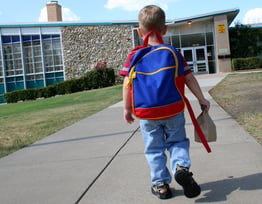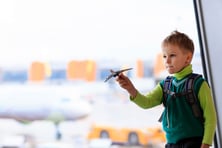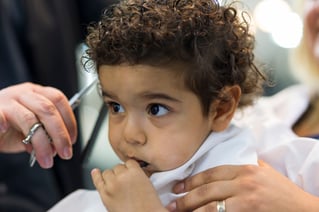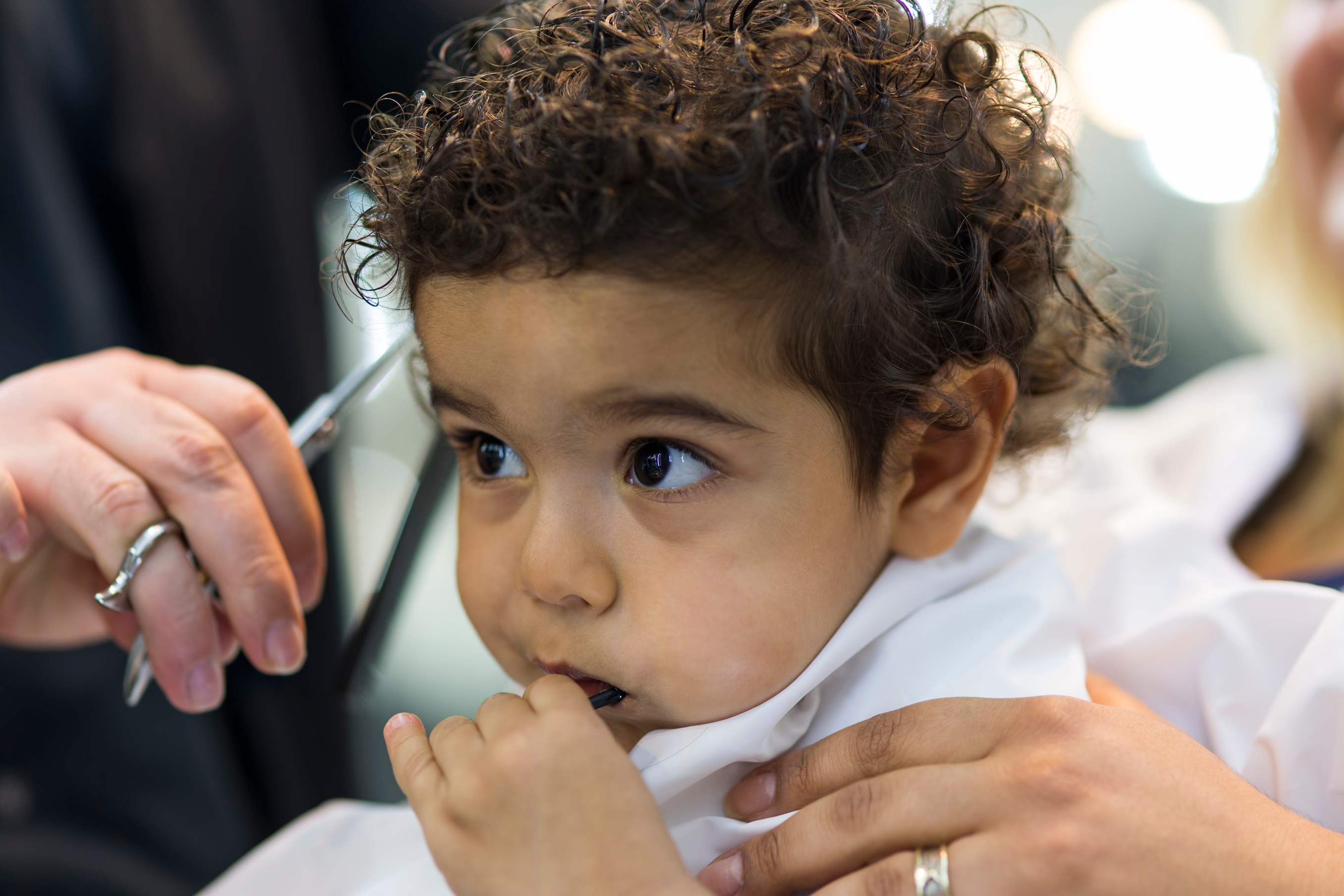6 Strategies to Prepare Your Child for Back to School, Haircuts, Hospital Visits, And More!
Preparing Your Child with Autism for the New Year
Activities that are comforting, thrilling, or intolerable to people with autism can vary considerably from what a neuro-typical child or adult may experience in the same situation. For example, haircuts or birthday parties can be extremely unpleasant. Carly Fleischmann, a woman with autism, wrote a book about her experiences and a team of talented disability rights allies helped her produce this video, demonstrating her experience within a coffee shop.
1. Put Yourself in Your Child’s Shoes
As a caregiver, the most important step that you can take in preparation for a difficult event is to empathize with your child. Read books or blogs by autistic individuals, watch sensory simulations like Carly’s video, and try to take the perspective of your child. It is easy to become frustrated when your eight year old behaves inappropriately in a public place. You can feel the stares and the judgment and you know how messy the situation can continue to become. But if you can understand your child’s behavior as a reaction to over-stimulating or uncomfortable circumstances you can relate to their experience, anticipate their reactions, and equip your child with preventative steps and compensatory strategies.
2. Locate or Recruit Help
 The steps that you can take to prepare for a difficult event could apply to recurring events such as grocery shopping or new events like a big vacation. This work is not difficult but it does take time, especially at first. It is important to situate yourself within a wider network and not hold the reins as your child’s only champion. The more people who understand your child and learn to make the world more accommodating for people with autism, the easier it will be for all of us. Find allies within the school system, such as the school psychologist or behavioral therapist. Within hospitals look for Child Life Specialists, Family Coordinators or Autism Specialists. With private businesses like salons or dentist offices it often works to contact the owner directly. Airlines have representatives who work with individuals with disabilities to make appropriate accommodations. Some airports even host Autism Days where families can go through the entire process of arriving at the airport, going through security and boarding the plane just for practice.
The steps that you can take to prepare for a difficult event could apply to recurring events such as grocery shopping or new events like a big vacation. This work is not difficult but it does take time, especially at first. It is important to situate yourself within a wider network and not hold the reins as your child’s only champion. The more people who understand your child and learn to make the world more accommodating for people with autism, the easier it will be for all of us. Find allies within the school system, such as the school psychologist or behavioral therapist. Within hospitals look for Child Life Specialists, Family Coordinators or Autism Specialists. With private businesses like salons or dentist offices it often works to contact the owner directly. Airlines have representatives who work with individuals with disabilities to make appropriate accommodations. Some airports even host Autism Days where families can go through the entire process of arriving at the airport, going through security and boarding the plane just for practice.
3. Build A Plan For Your Child
A valuable starting point as you work to prepare your child for something is to write a comprehensive list containing the steps and experiences involved in the event. This task analysis is also a useful practice in perspective taking, as you must imagine how your child experiences a specific series of events.
When I create these for individuals with autism I focus on sensory and new experiences, which usually have the highest likelihood of stressing an individual with autism. Try to anticipate obstacles in each environment. Specifically, it helps to consider new people and how they will interact with your child and pay close attention to any tools or materials that will touch your child. The format of the list does not matter; I prefer to write in prose rather than list form as it helps me imagine the scene more easily. The example below outlines the beginning of a haircut and potential challenges are underlined. After this exercise it will become clear where you can intervene to create a more successful experience.
The car arrives at an unfamiliar building. We open the door and a chime sounds. It smells like sweet floral chemicals and there are many voices, some yelling over the sounds of hair dryers. Everyone is wearing capes or aprons and some people have towels on their heads. I see scissors and buzzers and chairs that remind me of the dentist. A woman greets us loudly and turns to [child], saying “Hi there little guy! Don’t you look handsome!” She waits for a response from [child].

4. Social Stories
Social Stories are beneficial for some children with autism and even some teens. It may also help you to visualize the event. They are short homemade books or PowerPoint slides that use photos and short sentences to outline the steps involved in a process. This social story was created by myself and my coworkers at Boston University’s CARE Lab to prepare kids for an EEG. The lab specializes in working with minimally verbal individuals with autism. This example can give you a sense of how to create a social story for your own child.
5. Desensitization & Habituation
Experiences seem to be challenging for people with autism for two reasons:
A) The sensory stimuli such as light or sound are over stimulating/frustrating or
B) The situation is new and this creates anxiety
For example, a child may reject a wet comb during a haircut because the wetness, pressure from the comb, and having someone touch their head are all sudden and new experiences. The situational anxiety and the various sensory components combine to create an uncomfortable experience.
To alleviate this discomfort and decide whether we need to modify the haircut, we can first introduce each tool (such as the comb) and each sensory experience (the wetness and someone touching the head) slowly, gently, and in isolation. If the child can comfortably cope with each of these alone we can begin to introduce them in combination, slowly building up to the complete haircut experience. We can refer to that process as desensitization (because we have alleviated the child’s hypersensitivities to the water and the comb after gentle exposures) and habituation (because through practice these steps have become routine and are no longer anxiety-provoking).
Sometimes, you will find that a particular tool or sensation is truly uncomfortable for the child, regardless of their level of anxiety. In this case, you identify the offending step and find a way to modify the experience. If the child won’t wear the salon cape because the itchy feeling around their neck is too uncomfortable maybe you can drape a towel around them instead or just deal with the hair on their neck and shirt.
6. Normalize the Setting
Locations themselves can present a major challenge. A salon is a good example. The sights, sounds, and smells inherent to the environment can be a major challenge. With small children it might be practical to do haircuts at home, but we do not want to coddle a child based on their diagnosis or disability. As a caregiver, your role is to build capacity and compensatory strategies, as you would for any child, that they can use throughout their lives. Instead of avoiding a salon altogether, maybe find one that is willing to use a back room or schedule you during a time when the building is nearly empty. In this way, you can desensitize your child to the environment or equip them with materials (like ear buds to block noise or a mask to block smells) that will allow them to exist more comfortably in that setting rather than avoiding the experience entirely.
Repeated exposures to a location can help as well, particularly if the child feels anxiety. Bring your child with you to visit the location for a few minutes one day. Next time maybe schedule a visit where they can meet some staff and play in the dentist chair, salon chair, etc. Child Life Specialists are a great resource with information about medical play and how to orient a child to a location within a hospital, which can be particularly challenging.
Resources
Your child’s therapist and special education team should be able to help you out with this process. Many therapists will create the protocols themselves but if your child does not have access to these resources or other skills are prioritized during therapy sessions you can work towards this yourself.
Use our free protocol page that demonstrates the process described above on preparing a child with autism for a haircut. This protocol can be modified for any new activity: dentist office, hospital, airport, and getting prepared for the first day of school.
For more on support on transitions and new experiences, see:

Briana Brukilacchio
Briana Brukilacchio has worked with autistic individuals and their families in many settings. From schools and summer camps to research labs and psychiatric clinics, she has made it her mission to meet and learn from as many people on the spectrum as possible. She holds a Masters of Education in Human Development and Psychology from the Harvard Graduate School of Education and is pursuing a PhD in Educational Psychology, specializing in Clinical Neuropsychology, at the University of Texas at Austin.





